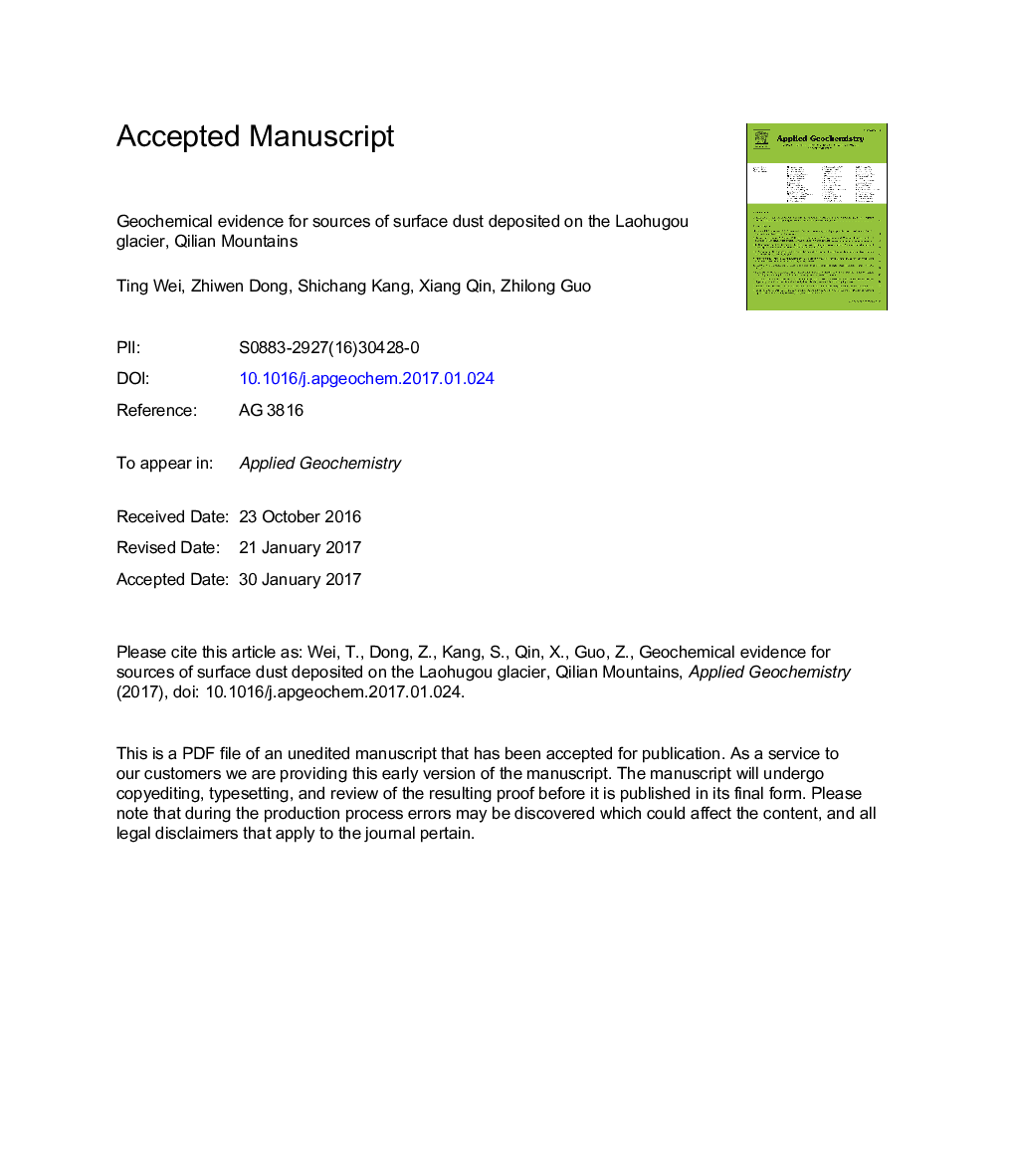| Article ID | Journal | Published Year | Pages | File Type |
|---|---|---|---|---|
| 5752564 | Applied Geochemistry | 2017 | 28 Pages |
Abstract
Atmospheric dust deposited on glacier surfaces can decrease snow albedo by enhancing lighting absorption and by forming cryoconites via microbial activity, which accelerates glacier melt. Using snow and cryoconite sampled from the Laohugou Glacier No.12 in the Qilian Mountains during spring 2012 and summer 2014, this work investigates the SrNd isotopic and rare earth element (REE) geochemistry of dust and its environmental significance. Results demonstrate that dust REEs possess lower Eu/Eu* and L/HREE, and higher (Gd/Yb)N values compared with that of the Mu Us and Hobq Deserts but yield higher (La/Yb)N, L/HREE, (La/Sm)N and (La/Yb)N ratios than that of the Taklimakan Desert. The REE composition of glacier surface dust is similar to the material from nearby arid regions, such as the Qaidam Basin and the Tengger and Badain Jaran Deserts surrounding the eastern Tibetan Plateau. The εNd(0) values of glacial dust resemble the isotopic ratios of the Qaidam, Badain Jaran, Tengger Deserts and local dust (εNd(0) value of â13.6) but differ from that of the Taklimakan Desert, which has higher 87Sr/86Sr ratios. Analysis of air mass trajectory also indicates a potential dust input from the surrounding areas to the alpine glaciers in the Qilian Mountains. These results strongly indicate that the dust source from the arid, northern Tibetan Plateau region was the dominant contributor to atmospheric dust deposition on the glacier surface, rather than dust originating from the long-range transport of Taklimakan Desert material.
Keywords
Related Topics
Physical Sciences and Engineering
Earth and Planetary Sciences
Geochemistry and Petrology
Authors
Ting Wei, Zhiwen Dong, Shichang Kang, Xiang Qin, Zhilong Guo,
